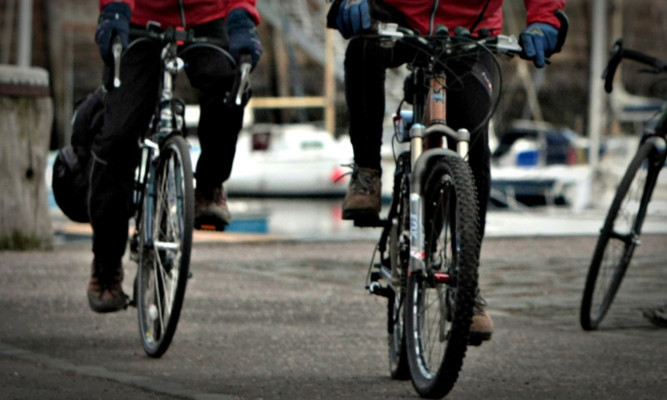All residential areas should have 20mph zones to make them safer for cyclists, according to a refreshed action plan from the Scottish Government.
The aspiration is among 19 new commitments including an annual national “summit” involving government ministers and senior council officials to gauge wider progress in promoting cycling.
The updated Cycling Action Plan for Scotland (Caps), while backing some campaigners’ suggestions, dismissed calls for a “strict liability” law forcing motorists to prove they were not at fault in accidents with cyclists.
Transport Minister Keith Brown said: “We are committed to the vision outlined in the updated Caps document for 10% of journeys to be by bike by 2020 and continue to invest in the infrastructure required to increase participation in cycling for everyday travel.
“Most cycling trips are local trips and we encourage local authorities to invest more in local facilities.”
He also announced funds for a series of local bike schemes. A “cycle safely” project in Edinburgh will get £45,000 and an Aberdeen bike ride event will get £34,000.
The benefits of a strict liability law were not proven in research, the report stated.
Campaigners asked for the UK to follow countries such as Australia, New Zealand, France, Germany and Denmark.
The Caps report, published by government agency Transport Scotland, said: “The available data does not supply robust evidence of a direct causal link between strict liability legislation to levels of cycling and KSIs (killed and seriously injured statistics), when countries like the UK and Ireland are clearly reducing fatalities in cyclists and all other road users without strict liability legislation in place.”
The rule, which can create a hierarchy of blame, would also make cyclists automatically responsible for an accident involving a pedestrian.
Green MSP Alison Johnstone broadly welcomed the report but said it is not backed by adequate funds.
“Investing in better infrastructure isn’t cheap but will save our health service a huge amount, and we should draw far more on the large health budget and look at raising more income too,” she said.
“We need creative thinking from the Scottish Government to build a once-in-a-generation fund to bring our streets up to European standards.”
On strict liability, she said: “I’m disappointed that the minister is dismissing the debate on strict liability before really listening to the arguments. We need to rebalance the relationship between motor vehicles and cyclists on our roads, and using the law to do this deserves serious discussion.”
